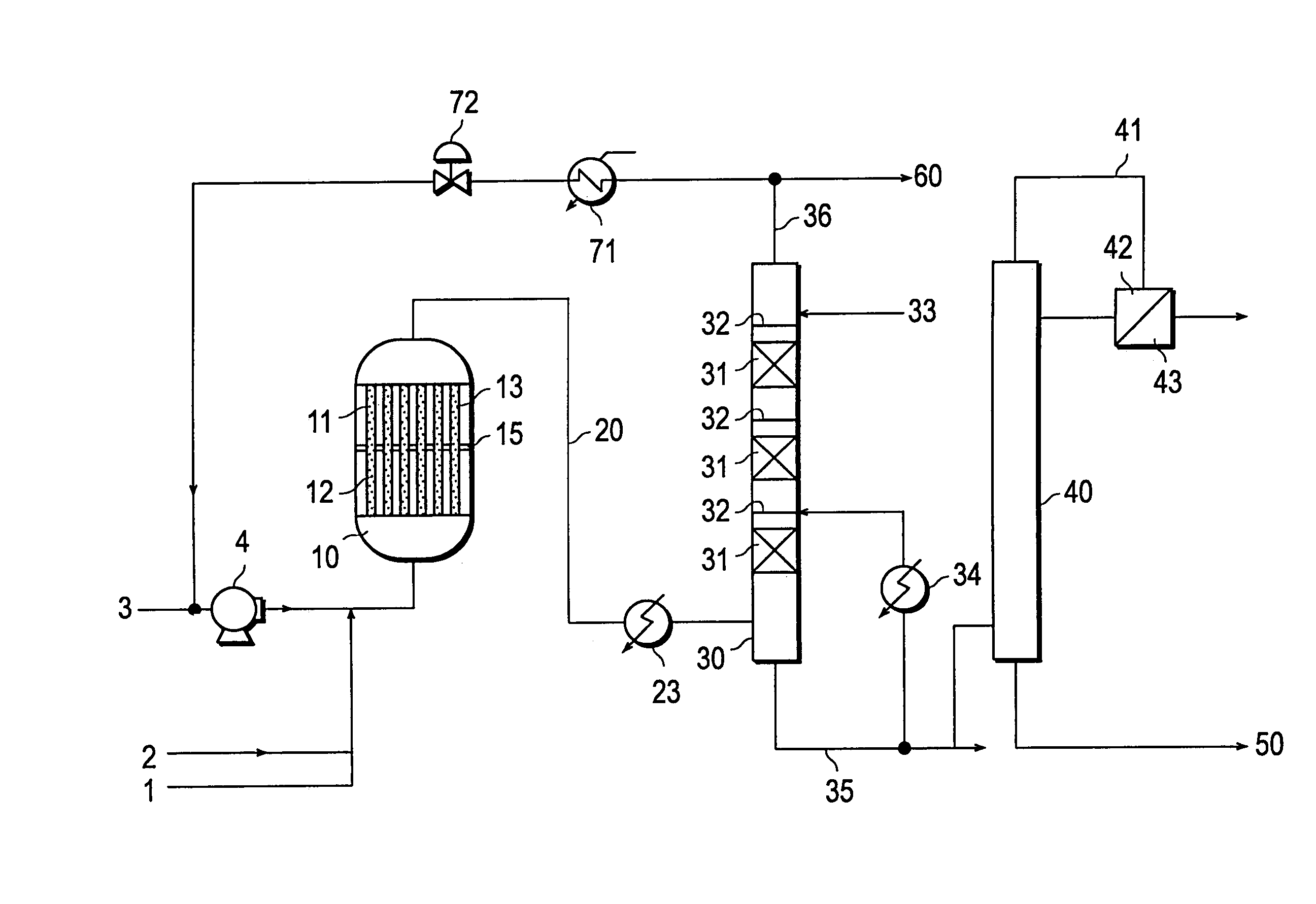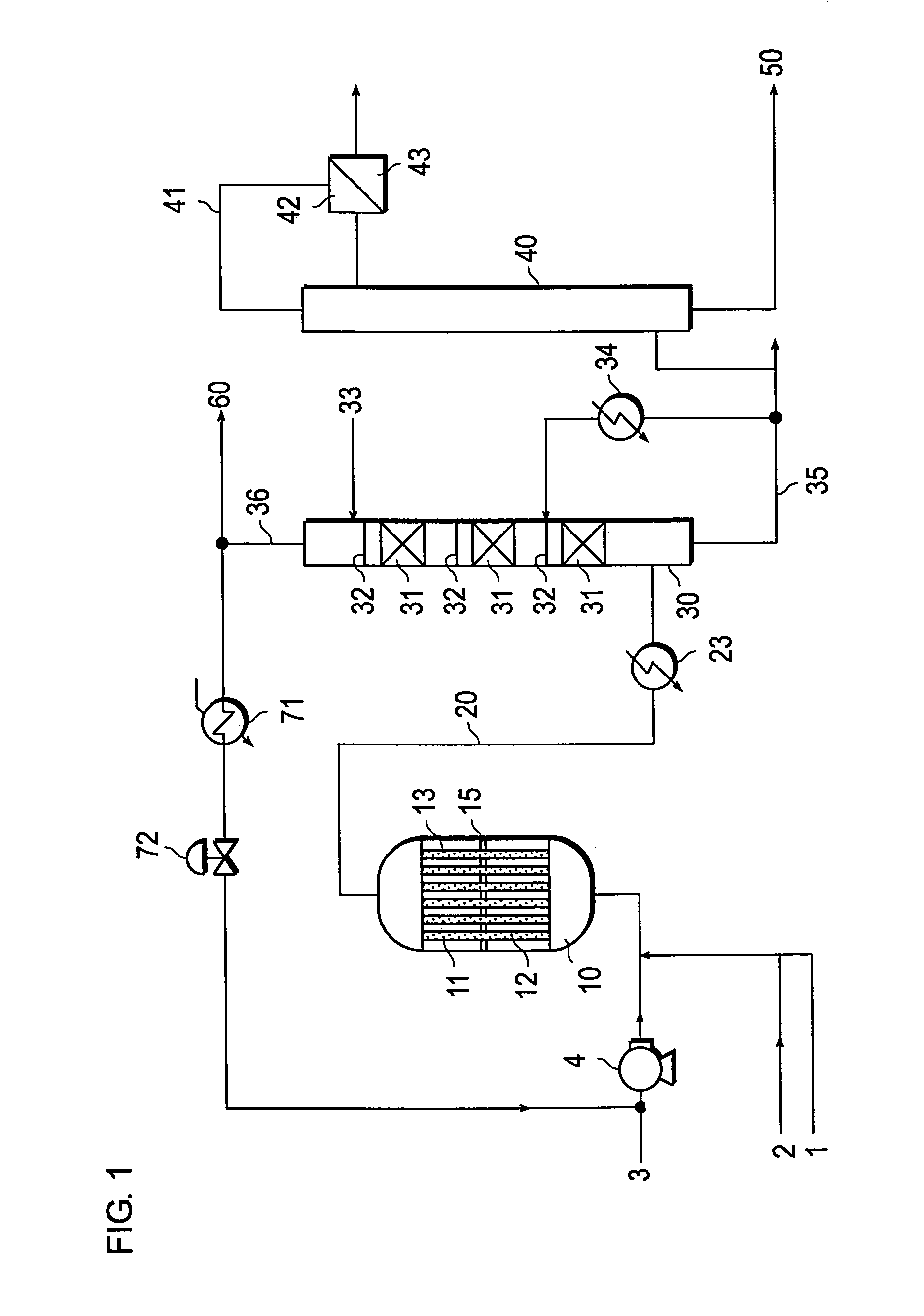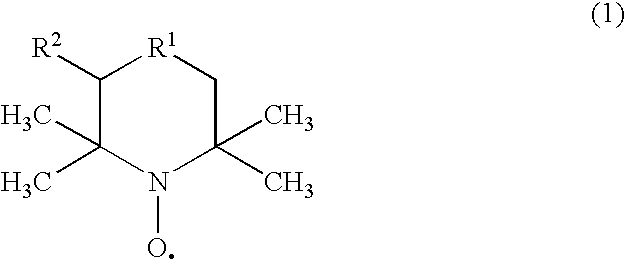Method for production of acrylic acid
a technology of acrylic acid and production method, which is applied in the preparation of carboxylic compounds, organic chemistry, chemistry apparatus and processes, etc., can solve the problems of reducing the yield of the product, degrading the quality of the acrylic acid produced, and difficult control of these factors, so as to achieve the effect of reducing the number of polymers, and reducing the cost of production
- Summary
- Abstract
- Description
- Claims
- Application Information
AI Technical Summary
Benefits of technology
Problems solved by technology
Method used
Image
Examples
reference example 1
Preparation of Catalyst
[0080]A molybdenum-bismuth type catalyst was prepared as the catalyst for use in the first reaction zone by following the procedure of Example 1 of the official gazette of JP-A-2000-325795. It will be designated as Catalyst (I) herein below. A molybdenum-vanadium type catalyst was prepared as the catalyst for use in the second reaction zone by following the procedure of Example 1 of the official gazette of JP-A-08-206504. It will be designated as Catalyst (II) herein below.
[0081]Conversionratioofpropylene(%)=100×[(Numberofmolesofreactedpropylene) / (numberofmolesofsuppliedpropylene)]Yieldofacrolein(%)=100×[(Numberofmolesofformedacrolein) / (numberofmolesofsuppliedpropylene)]Yieldofacrylicacid(%)=100×[(Numberofmolesofformedacrylicacid) / (numberofmolesofsuppliedpropylene)]
example 1
[0082]A reactor which was covered with a jacket for circulation of thermal medium, and provided with reaction tubes measuring 25 mm in inside diameter and 7,000 mm in length therein and inserted a perforated tube plate having a thickness of 75 mm in a position of 3,500 mm from the lower part of the jacket was used. The plate divides the reactor into two vertical parts, an upper one and a lower. The resultant reaction zone (the lower part acts as a first reaction zone and the upper part acts as a second reaction zone) which allowed the temperatures of the thermal media for the upper and the lower parts thereof to be controlled by circulating the thermal media respectively to the upper and the lower parts. It was packed sequentially from the lower part to the upper part of the reaction tube with (1) ceramic balls alone having an average diameter of 5 mm, (2) a mixture formed by mixing the catalyst (I) and ceramic balls of an average diameter of 5 mm at a volume ratio of 70:30, (3) the...
example 2
[0087]A reaction was performed by following the procedure of Example 1 while changing the composition of the mixed gas supplied to the first reaction zone to 9.0 vol. % of propylene, 16.2 vol. % of O2, and 2.9 vol. % of H2O (the balance formed of N2O, propane, etc.). After the elapse of 100 hours following the start of the reaction, the yield of acrylic acid was 86.5 mol %. The acrylic acid-containing gas obtained at this point was introduced at a temperature of 168° C. into an acrylic acid absorption column having 14 steps as a theoretical number of steps to absorb the acrylic acid therein with an absorbent water containing 1.8 wt. % of acrylic acid 6.0 wt. % of acetic acid, and such an amount of hydroquinone as equaled 200 wt. ppm based on the amount of the acrylic acid in the acrylic acid-containing gas introduced into the absorption column. When the amount of the absorbent was so adjusted as to fix the water concentration of the bottom liquid of the absorption column at 21 wt. %...
PUM
| Property | Measurement | Unit |
|---|---|---|
| pressure | aaaaa | aaaaa |
| temperature | aaaaa | aaaaa |
| temperature | aaaaa | aaaaa |
Abstract
Description
Claims
Application Information
 Login to View More
Login to View More - R&D
- Intellectual Property
- Life Sciences
- Materials
- Tech Scout
- Unparalleled Data Quality
- Higher Quality Content
- 60% Fewer Hallucinations
Browse by: Latest US Patents, China's latest patents, Technical Efficacy Thesaurus, Application Domain, Technology Topic, Popular Technical Reports.
© 2025 PatSnap. All rights reserved.Legal|Privacy policy|Modern Slavery Act Transparency Statement|Sitemap|About US| Contact US: help@patsnap.com



